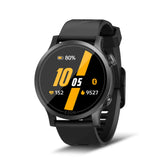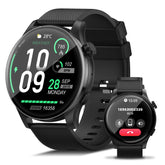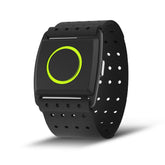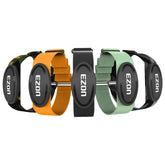A Beginner's Guide to 10K Training Plan and Heart Rate Monitoring
Embarking on your journey to complete a 10K race is an exciting challenge, especially if you’re new to running. A well-structured 10k training plan for beginners can help you build stamina, improve fitness, and avoid burnout, while incorporating heart rate monitoring can take your training to the next level. In this guide, we’ll walk you through the basics of creating a beginner-friendly 10K plan and explain how tracking your heart rate can enhance your performance and recovery.
Laying the Foundation: Your 10K Training Plan Basics
As a beginner, consistency is key. Start with a gradual approach to build your running base without overwhelming your body. A typical 10K training plan spans 8–12 weeks, focusing on a mix of easy runs, interval training, and long, steady runs. Here’s a simple framework to get started:
- Week 1–4: Combine running and walking. For example, run for 1–2 minutes, walk for 2–3 minutes, repeating for 20–30 minutes, 3–4 times a week. This helps build cardiovascular endurance and prevents injury.
- Week 5–8: Increase running intervals and reduce walking breaks. Aim for continuous running for 10–15 minutes, gradually extending to 20–25 minutes.
- Week 9–12: Focus on distance and pace. Incorporate one long run per week, slowly increasing to 10K (6.2 miles), and include one day of tempo runs or hill repeats to boost speed.
Remember to include rest days to allow your body to recover—active recovery like yoga or light walking can help with muscle repair and flexibility.
The Power of Heart Rate Monitoring in Training
Your heart rate is a window into your body’s effort level, making it a valuable tool for optimizing your training. By tracking where your heart rate falls during runs, you can ensure you’re training at the right intensity for your fitness level:
- Zone 1 (Easy Aerobic): 50–60% of your maximum heart rate (MHR). Ideal for easy runs and recovery days, helping build endurance and improve oxygen efficiency.
- Zone 2 (Moderate Aerobic): 60–70% of MHR. Great for steady-state runs, enhancing cardiovascular health and fat burning.
- Zone 3 (Tempo): 70–80% of MHR. Used for interval training or tempo runs to improve lactate threshold and speed.
- Zone 4–5 (High Intensity): 80–100% of MHR. Reserved for short sprints or advanced training, boosting anaerobic capacity.
Using a heart rate monitor, such as the EZON heart rate watch series, allows you to stay within your target zones, ensuring you’re not overworking or underworking during sessions. This precision helps prevent burnout and maximizes the effectiveness of each workout.
Integrating Heart Rate Monitoring into Your Training Plan
1. Easy Runs: Keep your heart rate in Zone 1–2. These runs should feel comfortable, allowing you to maintain a conversation while moving. This builds a strong aerobic base, crucial for finishing the 10K distance.
2. Interval Training: Alternate between high-intensity bursts (Zone 3–4) and recovery periods (Zone 1–2). For example, run 400 meters at Zone 4, walk or jog 400 meters to recover, repeating 6–8 times. This improves speed and stamina.
3. Long Runs: Aim for Zone 2–3 to practice running at a sustainable pace for longer durations. This helps your body adapt to the energy demands of the 10K.
4. Rest Days: Monitor your resting heart rate. A consistent or decreasing resting heart rate indicates improving fitness, while a sudden spike may signal fatigue or illness, prompting you to take an extra rest day.
Gear Up for Success: Essential Tools for Your 10K Journey
To make the most of your 10k training plan for beginners, invest in reliable equipment that supports your goals:
- A Comfortable Pair of Running Shoes: Choose shoes that fit well and provide adequate cushioning for your foot strike pattern.
- A Quality Heart Rate Monitor: The EZON heart rate watch series offers precise ECG-based tracking, helping you stay on top of your intensity levels during every run.
- A GPS-Enabled Sports Watch: Tools like the EZON GPS tracker watch can map your routes, track distance, and monitor pace, ensuring you hit your training milestones accurately.
Stay Motivated and Adjust as Needed
Training for a 10K is as much a mental journey as it is physical. Set small, achievable goals (e.g., “Run 30 minutes non-stop this week”) and celebrate progress. If you feel fatigued or experience soreness, don’t hesitate to adjust your plan—rest is part of the training process.
Remember, everyone’s fitness journey is unique. Focus on your own progress, listen to your body, and let your heart rate data guide you to smarter, more effective workouts.
Ready to Take the Next Step?
Whether you’re aiming to finish your first 10K or improve your time, a strategic 10k training plan for beginners paired with heart rate monitoring can set you up for success. Explore EZON’s range of sports watches designed to support every step of your journey, from the heart rate series for precise intensity tracking to the GPS series for route mapping and pace analysis.
Start today, and let your training reflect the dedication you’re putting into every mile.









